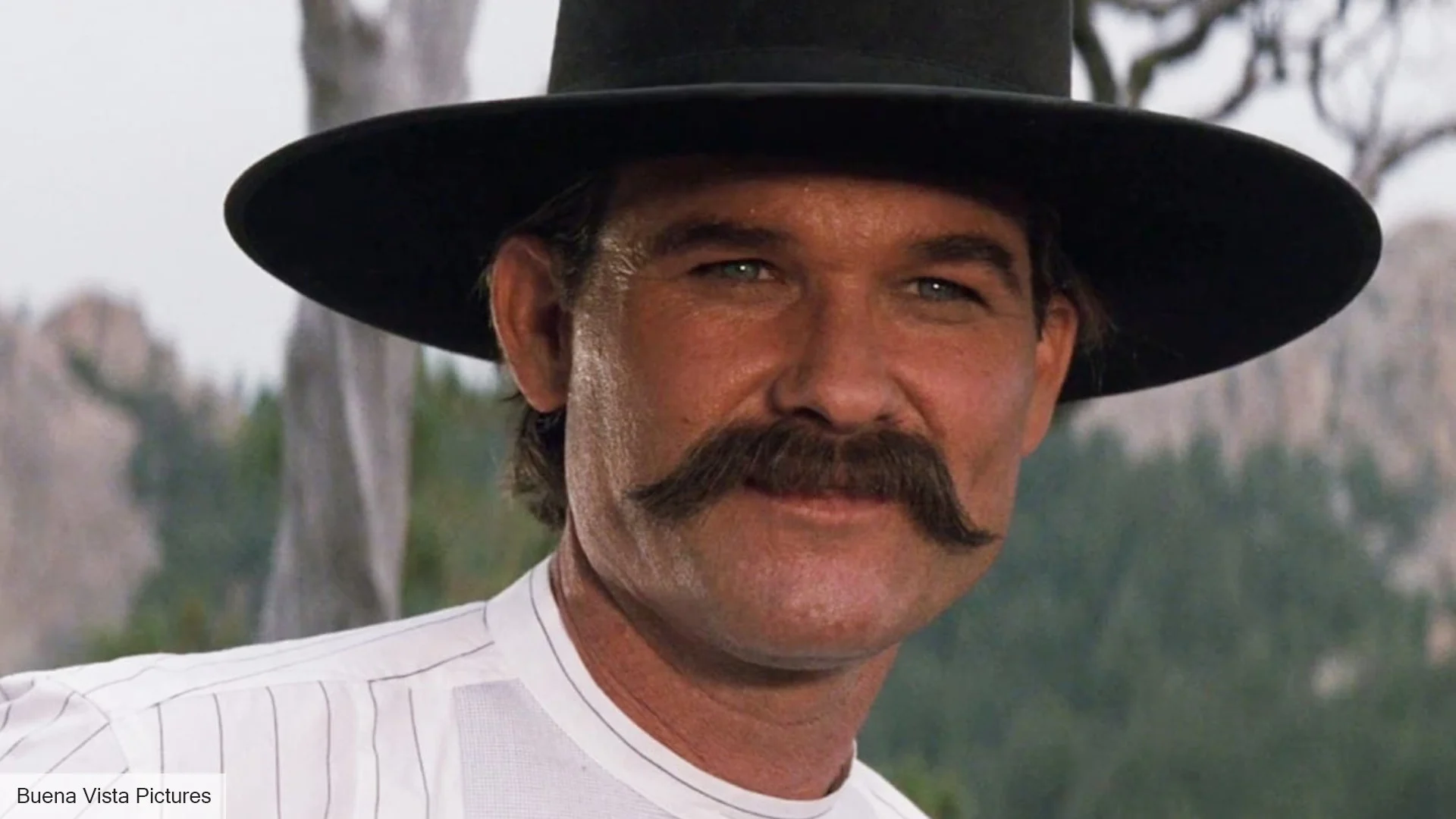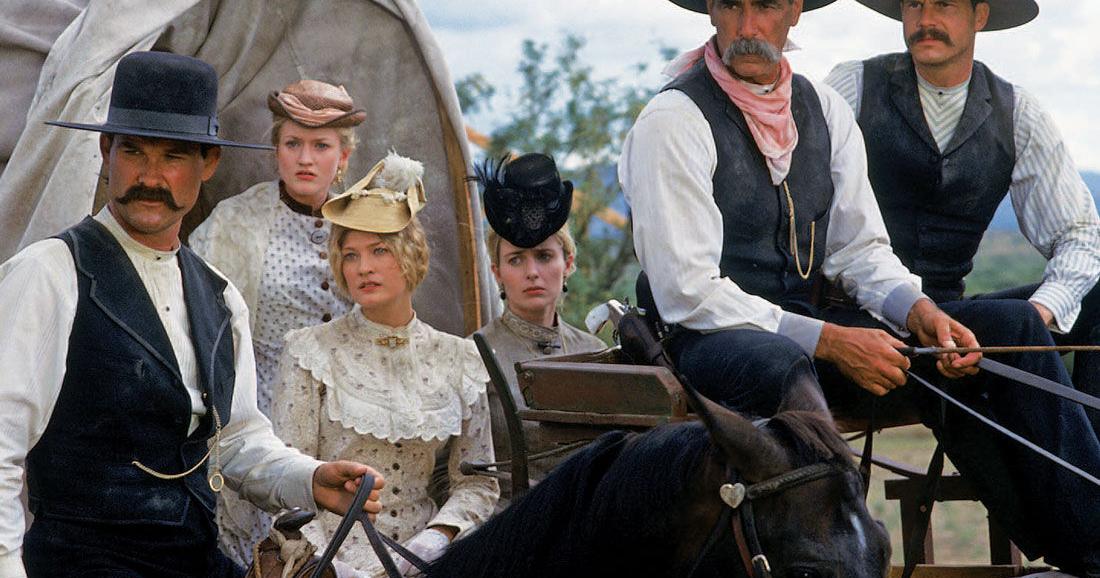In the annals of modern Westerns, “Tombstone” rides tall in the saddle, and in terms of sheer star power, few other Westerns could beat its ensemble cast in a shootout. Yet the 1993 film, credited to George P. Cosmatos, director of “Rambo: First Blood Part II” and father of Panos Cosmatos (“Mandy”), did not have the smoothest production. In the years since its release, stars Kurt Russell and Val Kilmer have both come out and said that Russell himself shot-listed and effectively directed or co-directed the movie.
Screenwriter Kevin Jarre (“Glory”) was originally set to direct his own script for “Tombstone,” but producers fired him after a month, bringing in Cosmatos at the last minute. Cosmatos died in 2005, and the year after that, Russell sat down for an interview with True West, where he gave his own account of what happened behind the scenes of “Tombstone.” He said:
“I backed the director; the director got fired, so we brought in a guy to be a ghost director. They wanted me to take over the movie. I said, ‘I’ll do it, but I don’t want to put my name on it. I don’t want to be the guy.’ I said to George, ‘I’m going to give you a shot list every night, and that’s what’s going to be.’ I’d go to George’s room, give him the shot list for the next day, that was the deal. ‘George I don’t want any arguments. This is what it is. This is what the job is.’
“I got him from [Sylvester] Stallone—called up Sly, said I need a guy. Sly did the same thing with ‘Rambo 2’ with George. And I said to George, ‘While you’re alive George, I won’t say a goddamn thing.’ “
I’m Your Huckleberry: Val Kilmer Gives His Own Account

Russell’s interview reveals other fascinating bits of behind-the-scenes lore, like the fact that Kevin Costner was going to star in “Tombstone” before he backed out and decided to do “Wyatt Earp” with Lawrence Kasdan instead. Russell said that Costner was playing industry hardball and “had shut down all avenues of release” for “Tombstone” except for distributor Buena Vista Pictures. Meanwhile, there was talk of Richard Gere and Willem Dafoe playing Wyatt Earp and Doc Holliday, respectively, in “Tombstone.”
Kilmer was coming off the transformative role of Jim Morrison in “The Doors,” and he would ultimately give one of his signature performances as the tuberculosis-riddled yet no less dangerous gunslinger, Holliday. The actor would even name his own 2020 memoir after the quote, “I’m your Huckleberry,” which Holliday utters at the end of the film as he comes walking out of the shadows to face Johnny Ringo (Michael Biehn), who was expecting to meet and defeat Earp in a showdown.
In his own 2017 blog post (via The Hollywood Reporter), Kilmer confirmed details of Russell’s account of the production of “Tombstone,” saying:
“I was there every minute and although Kurt’s version differs slightly from mine, the one thing he’s totally correct about is how hard he worked the day before, for the next day’s shot list, and tremendous effort he and I both put into editing, as the studio [Hollywood Pictures] wouldn’t give us any extra time to make up for the whole month we lost with the first director. I watched Kurt sacrifice his own role and energy to devote himself as a storyteller, even going so far as to draw up shot lists to help our replacement director, George Cosmatos, who came in with only two days prep.”
Kilmer continued:
“I have such admiration for Kurt as he basically sacrificed lots of energy that would have gone into his role, to save the film. Everyone cared, don’t get me wrong, but Kurt put his money where his mouth was, and not a lot of stars extend themselves for the cast and crew. Not like he did.”
Michael Biehn Chimes In

Not to be outdone, Michael Biehn took to Setting History Straight with some interesting “Tombstone” stories of his own, including an anecdote of a script reading where one hungover cast member projectile-vomited. Biehn acknowledged Kilmer’s commitment to his character — noting that he showed up for the reading already knowing Latin and stayed in-character on set most of the time.
Biehn also acknowledged that Russell was probably more deserving of a directorial credit than Cosmatos, in that he helped secure financing for the film, had a leadership role on set, and participated in many of the creative discussions that a director usually would have. However, he said that Russell did not direct him personally.
Biehn’s memories of the production make it sound like Jarre’s firing came about not because he had fallen behind schedule, as some dubious online sources indicate, but because he was so uncompromising in his vision. That vision was a two-edged sword in that it put all the pieces in place for “Tombstone” but then stifled the collaborative spirit of its cast and crew once they were there. Yet it was baked into “Tombstone” so deep that even after Jarre’s departure, “the movie directed itself,” as Biehn put it.
Jarre died in 2011, so neither he nor Cosmatos are around to give their side of the story. While we may never know the full story, “Tombstone” stands as a reminder that movies are not the product of one person, but a group endeavor with many moving parts.
